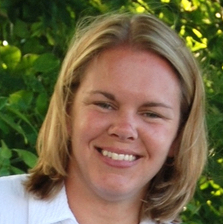There has been a lot of discussion about the difference between philanthropy and corporate social responsibility. The line between the two can be fuzzy at times. The Harvard Business Review lauds Goldman Sachs, Nike and Intel for showing exceptional results due to their philanthropic efforts, but their approaches look very much like strategic business initiatives. Is it corporate social responsibility or just smart philanthropy?
HBR laments that most companies don't plan their philanthropy well, giving funds in too small amounts to make any real impact or supporting pet charities without proven records. Although a rare few have made this combination work (hello, MAC anyone?), most efforts with these factors are doomed to fail. HBR singles out Nike, Goldman Sachs, and Intel because of their strategic focus, appropriate investment scale and accountability for results, respectively.
The Girl Effect In 2004, the Nike Foundation identified a sizable segment of the world’s population that had, up until then, been marginalized and overlooked. However, their research also showed that investing in adolescent girls could directly reduce global poverty. In 2009, The Girl Effect was born. The Nike Foundation uses the best traits of the Nike brand, while retaining its philanthropic identity and continuing to focus on finding solutions to global poverty.
So what’s the link between Nike’s core values and helping girls around the world? Nike Senior Portfolio Manager Adam Day said, “The focus on adolescent girls is truly authentic to our fundamental belief in the power of human potential, but also represents the highest value investment you can make to end poverty.” The Girl Effect is also supported by the NoVo Foundation, the World Bank, and the UN Foundation. Together this alliance has raised millions of dollars and initiated global programs that benefitted girls worldwide.
10,000 Women Women also benefit from Goldman Sachs philanthropic efforts. Until 2008, Goldman Sachs invested in a traditional portfolio of educational grants to support underserved small business owners. In 2008, the financial institution used its market knowledge to shift and narrow its focus, and its worldwide reach to gather expertise and build influential networks. Its 5-year, $100 million pledge to 10,000 Women saw immediate success. 10,000 Women helps women in economically depressed regions in more than 20 countries start and maintain their own businesses.
Women receive access to practical business training, support and access to loans for their businesses. On the strength of Goldman’s influence, the initiative got up to speed quickly and received substantial service support. Due to a sophisticated measurement system, results could be reported early. 70 percent of recipients have shown increased revenue, and half have created new jobs.
Intel Teach Measurable results were high on Intel’s priority list. It developed Intel Teach to measure its educational program which has trained a staggering 8 million teachers in 60 countries. Intel capitalized on its penchant for calculation and measurement by not just evaluating its participants, but holding itself accountable for the success of the program.
Based on results, Intel Teach continually evolves to improve instruction and outcomes. Intel follows graduates after the program and has found that 75.4% used their new skills in the classroom at least once. Wendy Hawkins, Executive Director of the Intel Foundation, underlines the need for evaluation. “Measurement makes it more likely that our leaders will support and fund the philanthropy. This is what they demand in their core business.”
Three separate initiatives, three separate approaches, and three sets of amazingly successful results. Each company brought its unique culture, core values and business strength to bear on a global issue and developed an effective solution with a worldwide impact. These foundations have certainly raised the philanthropic bar, and created a strategic business model for others to follow.

Andrea Newell has more than ten years of experience designing, developing and writing ERP e-learning materials for large corporations in several industries. She was a consultant for PricewaterhouseCoopers and a contract consultant for companies like IBM, BP, Marathon Oil, Pfizer, and Steelcase, among others. She is a writer and former editor at TriplePundit and a social media blog fellow at The Story of Stuff Project. She has contributed to In Good Company (Vault's CSR blog), Evolved Employer, The Glass Hammer, EcoLocalizer and CSRwire. She is a volunteer at the West Michigan Environmental Action Council and lives in Grand Rapids, Michigan. You can reach her at andrea.g.newell@gmail.com and @anewell3p on Twitter.














